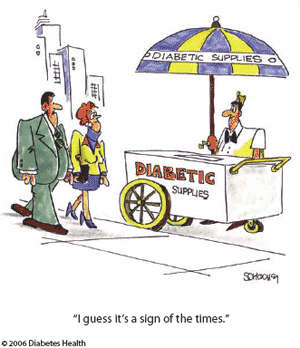Today is World Diabetes Day a day to strengthen awareness and advocacy around the global diabetes epidemic. The statistics are sobering: globally 382 million people have diabetes and by 2035 it is projected this will rise to 592 million. Despite the high prevalence, confusion around diabetes is common; even those suffering from it may not fully understand the pathology and treatment options. What better day to clarify some common misconceptions?
Myth 1: Type 1 and 2 are the same
While both are characterized by having higher than normal blood sugar levels (BSLs), type 1 and type 2 diabetes differ in their causes and management:
- Type 1 is an autoimmune disorder where the body cannot produce insulin – a hormone released in response to high BSLs. People with type 1 require life-long insulin injections.
- Type 2, the most common, occurs because your body becomes resistant to the action of insulin resulting in elevated BSLs. This is usually related to being overweight or physically inactive. Treatment options range from exercise and weight loss to medication and insulin injections.
Myth 2: If you dont have symptoms you dont need to worry
Many diabetics might not experience symptoms; however, elevated BSLs over time damage blood vessels, nerves and organs and can lead to complications including heart disease, neuropathy, retinopathy, kidney disease, foot ulcers and amputation.
Myth 3: Diabetics must follow a diabetic diet
There is no such thing as a diabetic diet. People with diabetes benefit from following a balanced, healthy diet with appropriate portion sizes for a healthy weight, like everyone else!
Particular attention should be paid to foods containing sugar and carbohydrates as these will raise BSLs, but these do not need to be excluded. Rather, they should be consumed in sensible amounts with preference given to less-processed foods.
Those taking insulin or medications are at risk of having low BSLs which can be dangerous. At these times consuming something sugary like orange juice or jelly beans is necessary to normalize BSLs.
Diabetes is a life-long, complex condition. Its never too early to start thinking about prevention. In fact, early-life influences such as maternal lifestyle and duration of breastfeeding affect the risk of diabetes in the next generation. Good nutrition and exercise prior to and during pregnancy can reduce a childs risk of developing diabetes later in life. Global healthcare company Novo Nordisk stresses the importance of women maintaining good health during pregnancy and babies being breast fed for at least six months.
Join the conversation: This years World Diabetes Day theme is Healthy Living and Diabetes, with a focus on starting the day with a healthy breakfast. What healthy breakfast will you start your day with?
(Share your answers below or on Twitter by tagging us at @VitalityInst)
Source of image: Diabetes Health website (click to enlarge)
Source of thumbnail: World Diabetes Day resources







